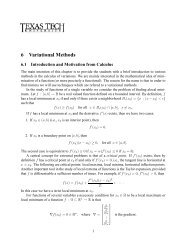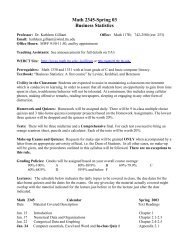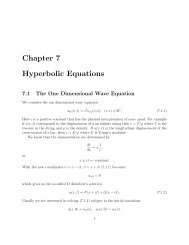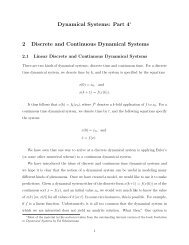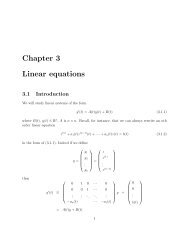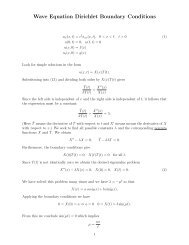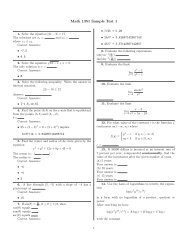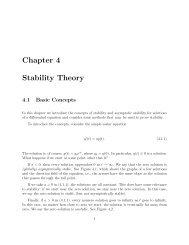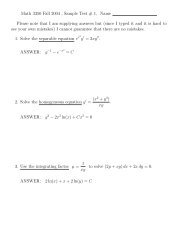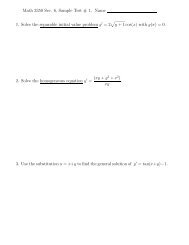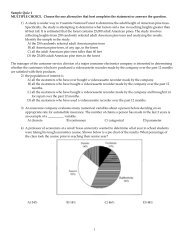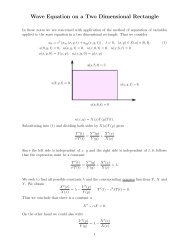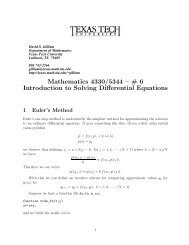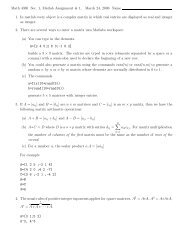Chapter 6 Partial Differential Equations
Chapter 6 Partial Differential Equations
Chapter 6 Partial Differential Equations
You also want an ePaper? Increase the reach of your titles
YUMPU automatically turns print PDFs into web optimized ePapers that Google loves.
10 CHAPTER 6. PARTIAL DIFFERENTIAL EQUATIONS<br />
Note that if ξ ≠ 0 is a vector in the x j -direction (i.e., ξ i = 0 for i ≠ j), then ξ ∈ Char x (L)<br />
if and only if the coefficient of ∂j<br />
k in L vanishes at x. Now, given any ξ ≠ 0, by a rotation<br />
of coordinates we can arrange for ξ to lie in a coordinate direction. Thus the condition<br />
ξ ∈ Char x (L) means that, in some sense, L fails to be “genuinely kth order” in the ξ<br />
direction at x.<br />
L is said to be elliptic at x if Char x (L) =∅ and elliptic on Ω if it elliptic at each x ∈ Ω.<br />
Elliptic operators exert control on all derivatives of all order.<br />
Example 6.2.3. The first three examples are in R 2 as discussed above.<br />
1. L = ∂ 1 : Char x (L) ={ξ ≠0:ξ 1 =0}.<br />
2. L = ∂ 1 ∂ 2 : Char x (L) ={ξ ≠0:ξ 1 =0 or ξ 2 =0}.<br />
3. L = 1 2 (∂ 1 + i∂ 2 ): L is elliptic on R 2 .<br />
4. L =<br />
n∑<br />
∂j 2 (Laplace Operator): L is elliptic on R n .<br />
j=1<br />
n∑<br />
5. L = ∂ 1 − ∂j 2 (Heat Operator): Char x (L) ={ξ ≠0:ξ j =0, for j ≥ 2}.<br />
j=2<br />
6. L = ∂ 2 1 −<br />
n∑<br />
∂j<br />
2<br />
j=2<br />
(Wave Operator): Char x (L) ={ξ ≠0:ξ 2 j = ∑ n<br />
j=2 ξ2 j }.<br />
Remark 6.2.4. In the notation introduced in Definition 6.2.1 we say that a surface S is<br />
oriented if for each s ∈ S we have made a choice of a vector ν(x) which is orthogonal to S<br />
and is a continuously varying function of x. Such a vector is called a normal vector to S at<br />
x. OnS ∩ V = {x : ϕ(x) =0} we have<br />
ν(x) =± ∇ϕ(x)<br />
|∇ϕ(x)| .<br />
Thus ν(x) is a C k−1 function on S. If S is the boundary of a domain Ω then we usually<br />
choose the orientation so that ν points out of Ω.<br />
At this point we can also define the normal derivative by<br />
.<br />
∂ ν u = ν ·∇u.



